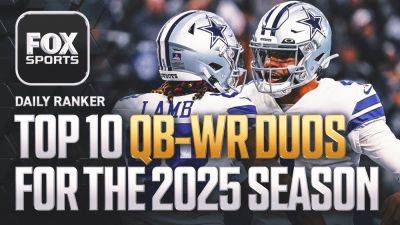Why aren't more QBs selected in middle rounds? Inside the NFL's latest draft trend
Two weeks ago, as the 2025 NFL Draft transitioned from Day 2 to Day 3, the parallel slides of former Colorado quarterback Shedeur Sanders and former Texas quarterback Quinn Ewers began to dominate the discussion surrounding this year’s event — even as their respective freefalls were sorted into wildly contrasting pools of logic.
The former, who ultimately went to the Cleveland Browns with the 144th overall selection, was knocked for the way he and his famous family handled portions of the pre-draft process, including formal interviews with several teams around the league that were reportedly less than impressed. The latter, who would eventually be taken by the Miami Dolphins with the 231st overall pick, was dinged for his potentially worrisome injury history and a career that had been solid if unspectacular across two seasons as the Longhorns’ starter, though both campaigns included trips to the College Football Playoff, the first such appearances in program history.
But from a purely numerical perspective — speaking only of draft capital invested — the NFL’s message to both was unflinchingly clear: Neither player was viewed as a likely starter at the game’s most important position; otherwise, had the inverse been true, both signal-callers would have been drafted far earlier.
Instead, Sanders and Ewers became two of the more high-profile prospects to embody a recent draft trend that, over the last two years, has seen franchises largely eschew selecting quarterbacks in the middle rounds. An examination of draft data from the 21st century shows that an average of 3.75 quarterbacks per year were selected in rounds two, three and four between 2000 and 2023. Since then, however, the number has plummeted to just three








